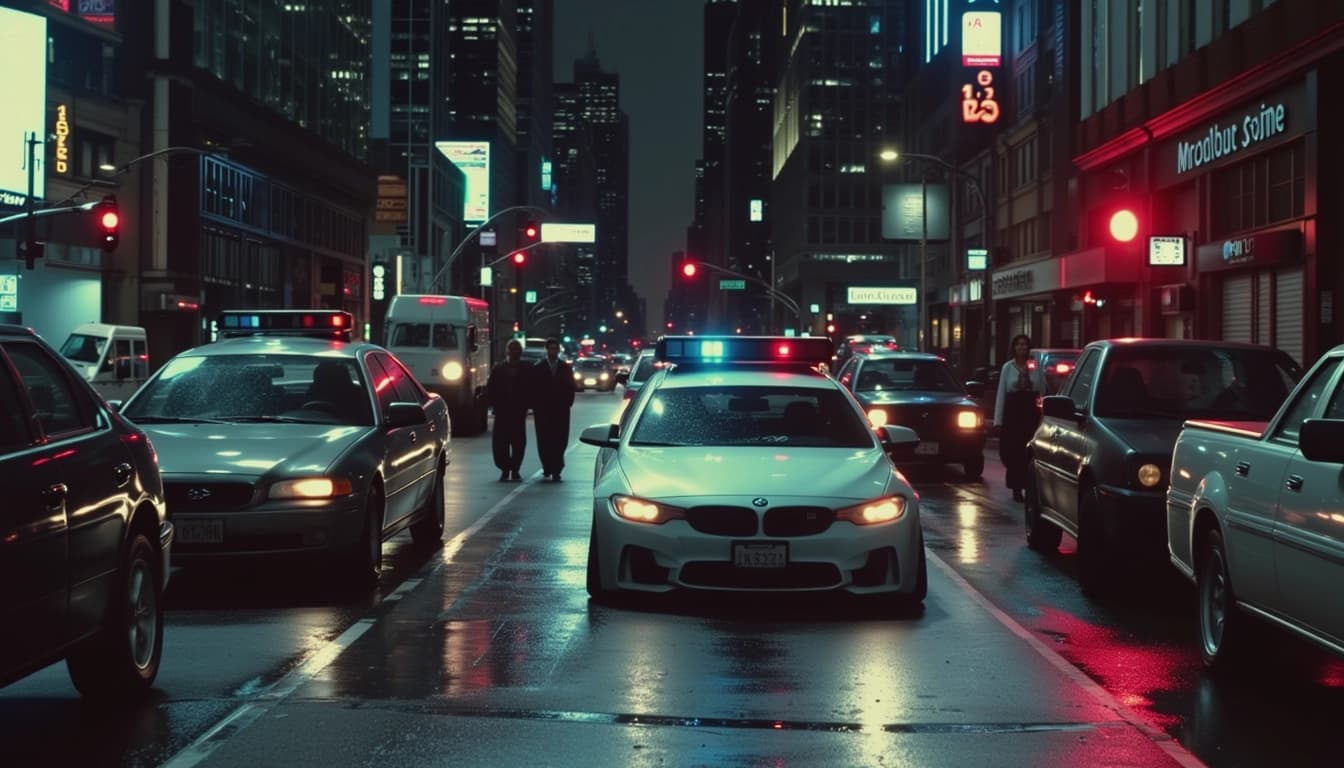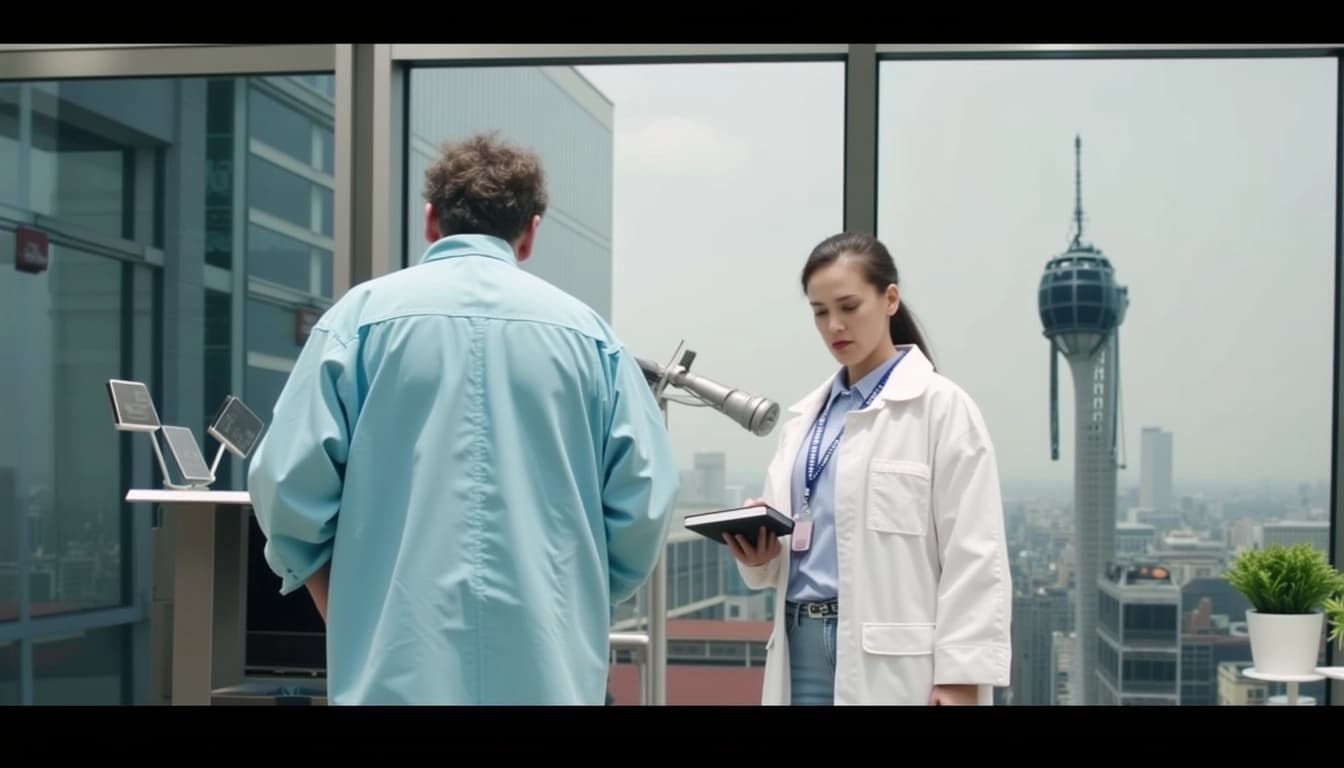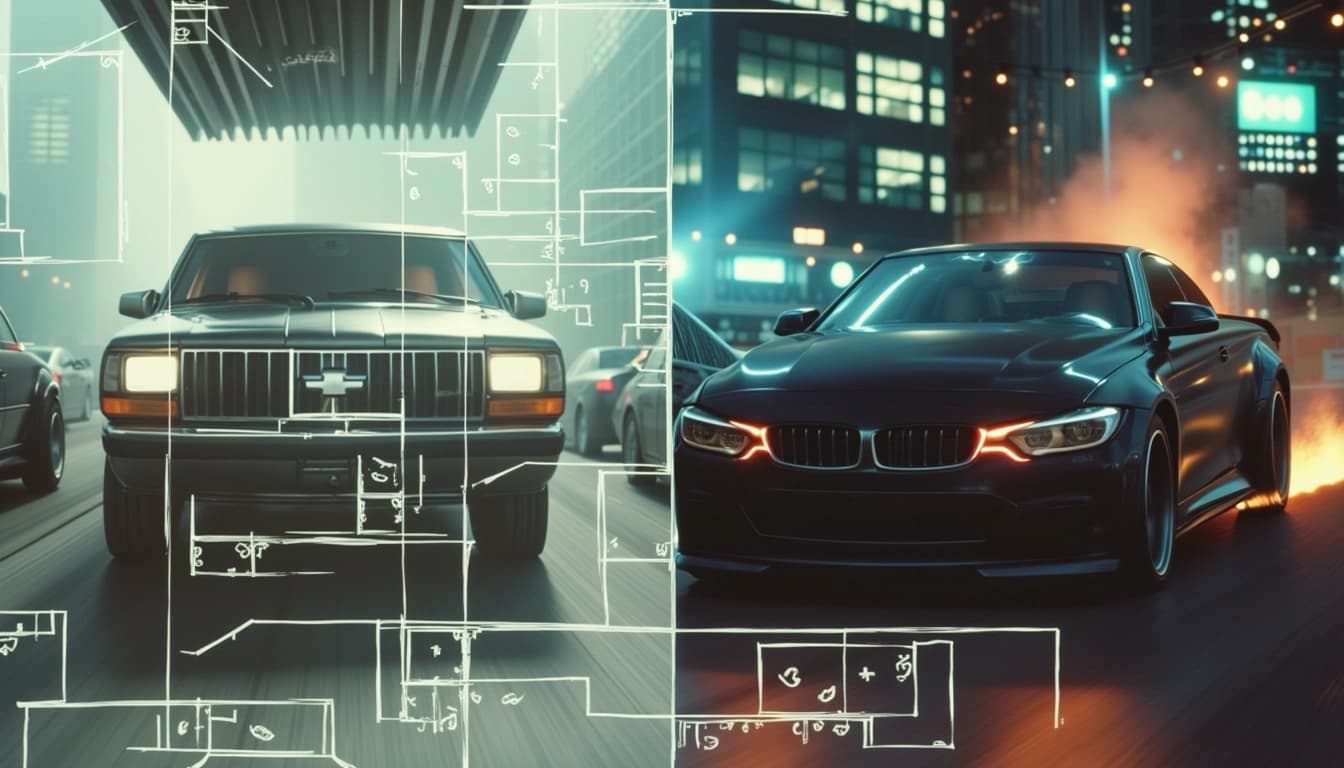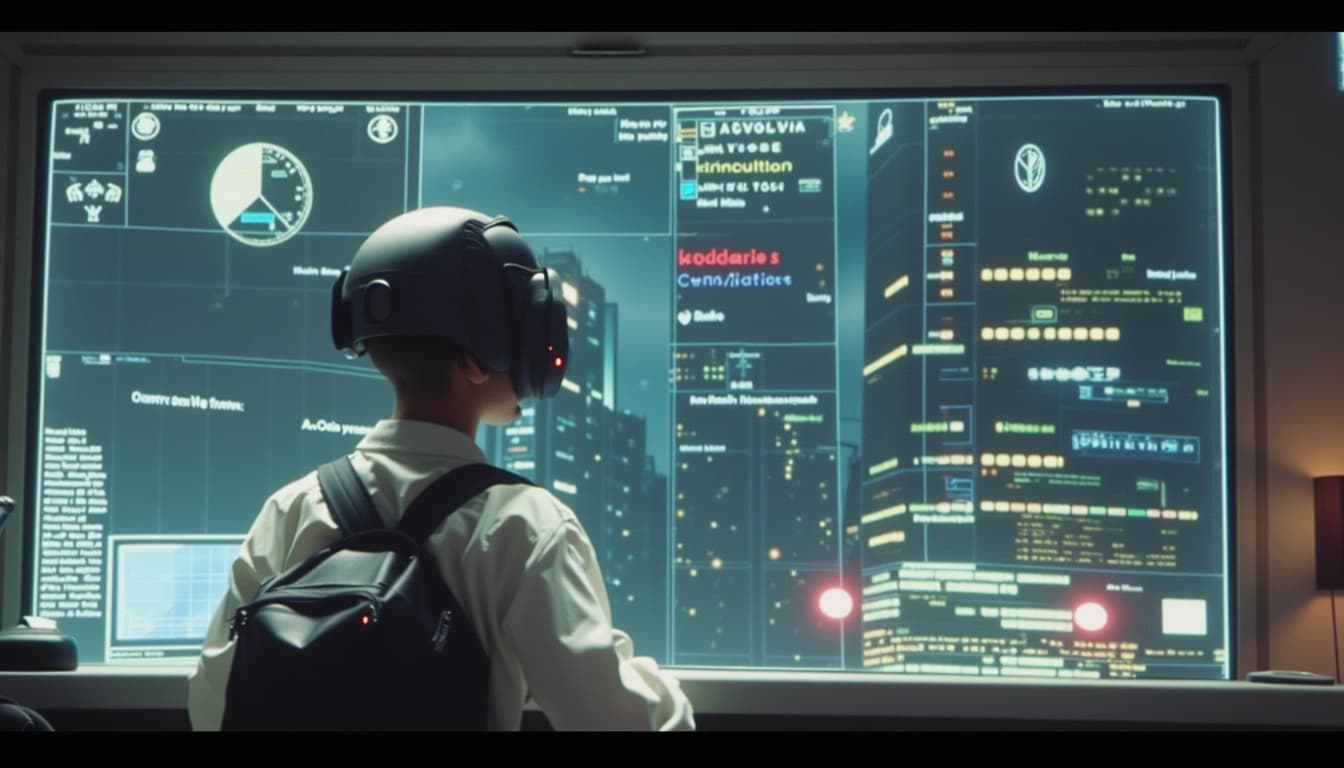
MiniMax Video-01 vs. Google Veo 2: Which Tells a Better Visual Story?
By John Doe 5 min
MiniMax Video-01 vs. Google Veo 2: Which Tells a Better Visual Story?
In the rapidly evolving world of AI-generated videos, choosing between MiniMax Video-01 and Google Veo 2 for telling a better visual story depends on various factors like realism, narrative coherence, and accessibility. This analysis explores both models, their strengths, and how they compare in crafting engaging visual narratives.
Overview of MiniMax Video-01
MiniMax Video-01, developed by the Chinese startup MiniMax AI, is a text-to-video AI model that generates high-resolution videos from prompts. It supports diverse styles, including CGI and anime, and is currently free to use with a resolution of 1280x720 at 25 fps, with plans to extend video length from 6 to 10 seconds.
- Storytelling Example: A notable demonstration is the "Magic Coin" video, which narrates a child's journey through history after discovering a magical coin, showcasing character consistency and special effects.
- User Feedback: Users have praised its ease of use and visual quality, particularly for stylized content.
Overview of Google Veo 2
Google Veo 2, from Google DeepMind, is a state-of-the-art video generation model capable of creating high-quality clips up to 4K resolution, with support for longer durations (up to two minutes or more). It excels in realism, detail, and prompt adherence, making it a strong contender for narrative-driven videos.
- User Preference: Comparative tests show Veo 2 is preferred over MiniMax, with a 58.8% preference rate in user evaluations for overall quality and accuracy in following prompts.
- Capabilities: It handles complex scenes and maintains consistency better than many competitors.
Key Points
- Research suggests Google Veo 2 likely tells a better visual story than MiniMax Video-01, based on superior realism and prompt adherence.
- MiniMax Video-01 excels in accessibility and has shown storytelling capability with its "Magic Coin" demo.
- The evidence leans toward Veo 2 for broader appeal due to higher resolution and user preference, but both are capable for different styles.
The advent of AI video generation tools has revolutionized content creation, enabling users to transform text prompts into visual narratives. Visual storytelling, in this context, involves crafting coherent sequences that engage viewers through narrative flow, character consistency, visual quality, and emotional resonance.
MiniMax Video-01: Features and Performance
MiniMax Video-01, developed by MiniMax AI, a Chinese startup backed by giants like Alibaba and Tencent, is designed to generate high-resolution videos from text prompts. Key features include technical specifications like 1280x720 resolution and 25 frames per second, with current support for 6-second clips, and plans to extend to 10 seconds.
Style Diversity and Accessibility
MiniMax Video-01 supports various styles, including CGI and anime, making it versatile for different storytelling needs. It is also free to use, requiring only mobile number registration, which enhances its reach and accessibility for a broader audience.
Google Veo 2: Features and Performance
Google Veo 2, developed by Google DeepMind, is a more advanced model capable of generating 1080p videos at 30 frames per second, with support for clips up to 20 seconds. It excels in realism and prompt adherence, making it suitable for professional-grade visual storytelling.

Realism and Prompt Adherence
Google Veo 2 handles complex instructions well, simulating real-world physics and human movement, which enhances storytelling. Its superior realism and adherence to prompts make it a preferred choice for users seeking high-quality visual narratives.
Comparison and Conclusion
Both models are impressive, but the evidence leans toward Google Veo 2 for telling a better visual story due to its superior realism and prompt adherence, which are crucial for engaging narratives. MiniMax Video-01, while accessible and effective for stylized stories, may appeal more to users needing diverse styles but lacks the same level of realism.

- Google Veo 2 offers higher resolution and longer clips.
- MiniMax Video-01 is free and supports diverse styles.
- Realism and prompt adherence are key strengths of Google Veo 2.
MiniMax Video-01 is a cutting-edge AI video generation tool developed by the Chinese company MiniMax. It enables users to create high-quality videos from text prompts, offering features like character consistency and dynamic scene transitions. The tool is designed to be user-friendly, making it accessible even to those without technical expertise.
Key Features of MiniMax Video-01
MiniMax Video-01 supports resolutions up to 720p and can generate videos up to 6 seconds long. It excels in creating stylized and animated content, making it ideal for creative projects. The tool also allows for character consistency, ensuring that the same character appears across different scenes, which is a significant advantage for storytelling.
Technical Specifications
The model is trained on a diverse dataset, enabling it to handle various styles and themes. It supports multiple aspect ratios, including 16:9, 9:16, and 1:1, catering to different platform requirements. The AI can generate videos with smooth transitions and dynamic effects, enhancing the overall visual appeal.
Storytelling Capability
A standout example is the 'Magic Coin' demo video, which depicts a child discovering a magical coin that transports him through historical periods. This video, generated entirely from text prompts, demonstrates MiniMax's ability to maintain character consistency and integrate special effects, underscoring its potential in narrative storytelling.

Limitations
The short video length (currently 6 seconds) may limit complex narrative development, and its resolution, while HD, is lower than some competitors' potential 4K output. However, the tool's ease of use and creative capabilities make it a strong contender in the AI video generation space.
Google Veo 2: Features and Performance
Google Veo 2, developed by Google DeepMind, is positioned as a state-of-the-art video generation model, competing with models like OpenAI's Sora. Its key features include support for up to 4K resolution and the ability to generate clips up to two minutes or more, making it suitable for more extended narratives.
Technical Specifications
Veo 2 excels in simulating real-world physics and human movement, enhancing realism, which is crucial for engaging visual stories. It also offers advanced prompt adherence, ensuring that the generated videos closely match the user's input.
Conclusion & Next Steps
Both MiniMax Video-01 and Google Veo 2 offer unique advantages in the AI video generation space. MiniMax is ideal for short, stylized content, while Veo 2 excels in longer, more realistic videos. Users should consider their specific needs when choosing between these tools.

- MiniMax Video-01 is great for short, creative projects.
- Google Veo 2 is better suited for longer, realistic videos.
- Both tools have unique strengths and limitations.
Google Veo 2 has been making waves in the AI-generated video space, with early reviews highlighting its impressive capabilities. Users have noted its ability to generate highly realistic videos, often surpassing competitors in terms of visual fidelity and prompt accuracy. The model supports longer video durations, up to 2 minutes, which opens up possibilities for more complex storytelling.
Prompt Accuracy and Realism
One of the standout features of Veo 2 is its ability to interpret user instructions with remarkable precision. In comparative tests, it outperformed models like Sora Turbo and Minimax, achieving a 58.8% preference rate for prompt accuracy. This means it better understands and executes the user's vision, resulting in videos that align more closely with the intended outcome. The realism of the generated content, particularly in human expressions and movements, has been praised by users on platforms like Reddit.
User Feedback on Realism
Discussions on Reddit highlight Veo 2's uncanny ability to generate human-like expressions and movements. For example, one user shared a video of a character with lifelike facial expressions, which was nearly indistinguishable from real footage. While these examples are often single scenes, they demonstrate the model's potential for creating emotionally engaging content.
Storytelling Potential
While Veo 2 hasn't been as prominently showcased in full narrative demos like MiniMax's 'Magic Coin,' its support for longer videos and complex prompts suggests strong storytelling capabilities. The ability to maintain consistency over extended durations is crucial for narrative coherence, and early indications are promising. However, more public examples of full stories would help solidify this assessment.

Limitations and Access
Despite its strengths, Veo 2 isn't without limitations. Access to the model may require joining a waitlist, which could delay immediate use for some creators. Additionally, some reviews note that the model can struggle with highly detailed or fast-moving scenes, leading to occasional inconsistencies. These challenges are common in AI-generated video and are likely to improve with future updates.
Conclusion & Next Steps
Google Veo 2 represents a significant leap forward in AI-generated video technology, particularly in terms of realism and prompt accuracy. Its potential for storytelling is evident, though more narrative-focused demos would help showcase this aspect. For creators looking to experiment with the model, joining the waitlist and exploring its capabilities is a logical next step. As the technology evolves, we can expect even more impressive results.

- Veo 2 excels in prompt accuracy and realism.
- Longer video support (up to 2 minutes) enhances storytelling potential.
- Access may be limited due to waitlist requirements.
- Consistency in fast-moving scenes can be a challenge.
In the rapidly evolving world of AI video generation, two standout models, Google Veo 2 and MiniMax Video-01, have emerged as leading contenders. Each offers unique strengths, but the question remains: which one tells a better visual story? This article delves into their capabilities, comparing aspects like resolution, emotional resonance, and prompt adherence to determine the superior choice for storytelling.
Resolution and Visual Quality
Resolution plays a critical role in storytelling, as higher clarity enhances immersion. Google Veo 2 supports up to 4K resolution, delivering stunning realism and detail. MiniMax Video-01, while impressive, maxes out at 1080p, which may limit its impact for high-definition storytelling. The difference in resolution can significantly affect how audiences perceive and engage with the narrative.
Realism vs. Stylization
Veo 2 excels in realism, making it ideal for narratives that require lifelike visuals. MiniMax Video-01, on the other hand, offers more stylized outputs, which can be advantageous for creative or abstract storytelling. The choice between the two depends on the story's tone and the desired emotional impact.
Emotional Resonance and Audience Engagement
A story's emotional pull is often tied to its visual fidelity. Veo 2's realistic outputs tend to resonate more deeply with general audiences, while MiniMax's stylized approach may appeal to niche viewers. User tests indicate a preference for Veo 2 in terms of emotional engagement, likely due to its superior detail and adherence to prompts.

Accessibility and Ease of Use
MiniMax Video-01 is free and easy to use, making it accessible to a broad user base. Veo 2, while more advanced, may require a waitlist or subscription, potentially limiting its reach. For storytellers prioritizing accessibility, MiniMax might be the better option, despite its technical limitations.
Conclusion and Final Thoughts
Google Veo 2 emerges as the stronger choice for visual storytelling, thanks to its high resolution, realism, and superior prompt adherence. However, MiniMax Video-01 remains a compelling alternative for stylized or shorter narratives, especially for users seeking an accessible and free tool. The decision ultimately hinges on the specific needs of the story and its intended audience.

- Google Veo 2 excels in realism and resolution.
- MiniMax Video-01 offers stylized outputs and accessibility.
- User tests favor Veo 2 for emotional engagement and prompt adherence.
Google's Veo 2 is the latest advancement in AI-generated video technology, offering impressive capabilities that rival OpenAI's Sora. This new tool is designed to create high-quality videos with minimal input, making it accessible to both professionals and hobbyists alike. The excitement around Veo 2 stems from its ability to generate realistic and coherent video content, pushing the boundaries of what AI can achieve in the creative space.
Features of Google Veo 2
Google Veo 2 boasts a range of features that set it apart from other AI video generators. It can produce videos with stunning visual fidelity, smooth transitions, and realistic motion. The tool also supports various styles and themes, allowing users to customize their outputs to fit specific needs. Additionally, Veo 2 integrates seamlessly with other Google services, enhancing its usability and functionality.
Ease of Use
One of the standout aspects of Veo 2 is its user-friendly interface. Even those with limited technical skills can navigate the platform and generate videos effortlessly. The AI handles most of the complex tasks, such as rendering and editing, freeing users to focus on creativity and storytelling. This makes Veo 2 an excellent choice for content creators looking to streamline their workflow.
Comparison with MiniMax AI
While Veo 2 is making waves, MiniMax AI's Video-01 is another strong contender in the AI video generation space. MiniMax offers unique features like advanced customization options and faster processing times. However, Veo 2's integration with Google's ecosystem gives it an edge in terms of accessibility and collaboration tools. Both platforms have their strengths, and the choice between them depends on the user's specific requirements.

Community Reactions
The release of Veo 2 has sparked lively discussions on platforms like Reddit, where users compare it to OpenAI's Sora. Many praise Veo 2 for its realistic outputs and ease of use, while others highlight areas where Sora still leads, such as in certain types of motion rendering. The competition between these tools is driving rapid advancements in AI video technology, benefiting creators worldwide.
Conclusion & Next Steps
Google's Veo 2 represents a significant leap forward in AI-generated video, offering powerful features and seamless integration with Google's services. As the technology continues to evolve, we can expect even more impressive capabilities and broader adoption. For those interested in exploring AI video generation, Veo 2 and MiniMax AI are both excellent options to consider.

- Explore Veo 2's features on Google's official platform
- Compare Veo 2 with other AI video tools like MiniMax and Sora
- Join online communities to share experiences and tips